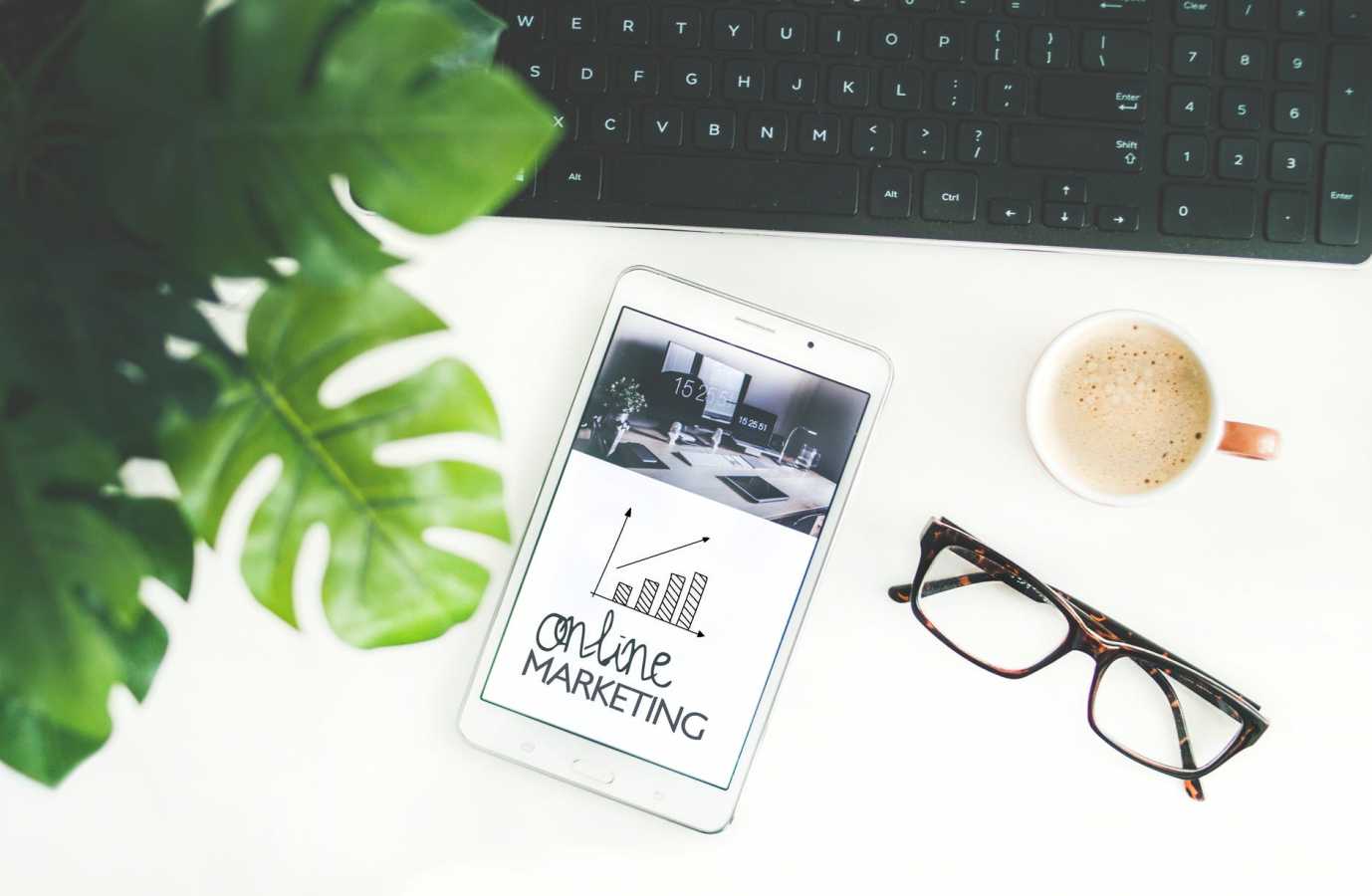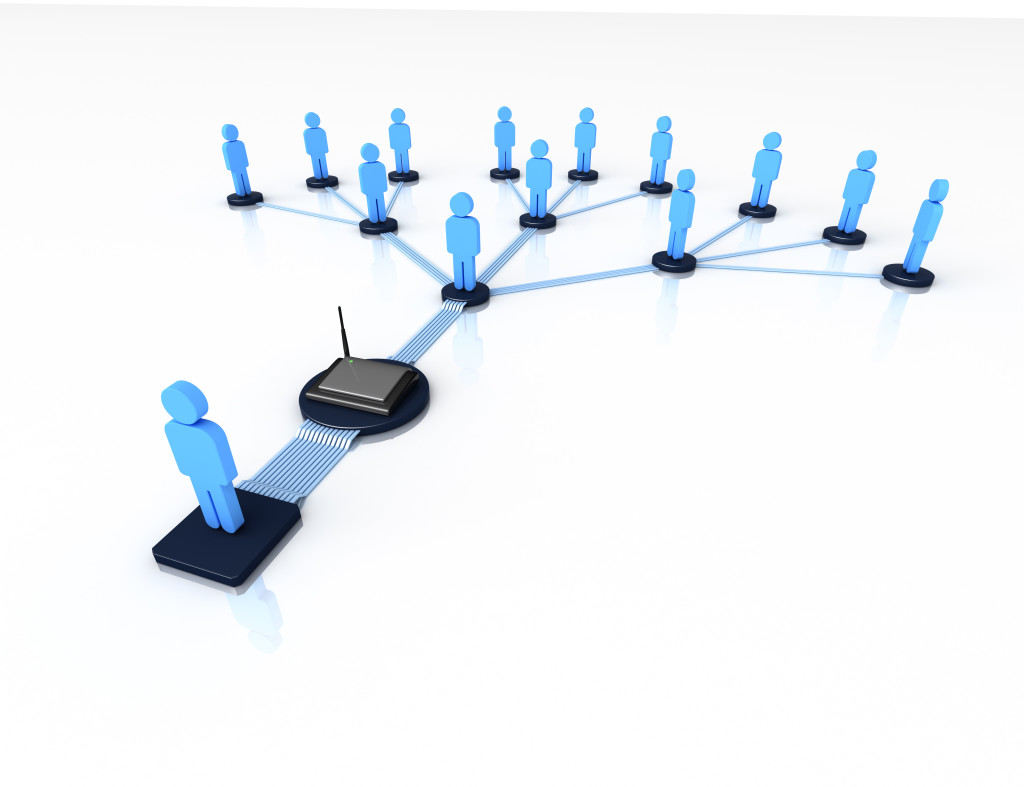In today’s day and age, digital marketing needs to be a priority for all businesses.
Creating your website was just the first step. Now you need to find ways to get traffic to your site and turn those visitors into dollars.
Simply put, Internet marketing is used to generate leads and drive sales through online platforms. But there is so much more involved with this broad topic.
That’s why I wanted to create a guide that lots of different people can benefit from.
This will be helpful for new businesses that are looking to start their online marketing strategy from scratch, older businesses that need to get with the times and improve their efforts, or anyone else in between that is trying to find new ways to market their brand online.
Relying on billboards, snail mail, and radio ads are no longer viable strategies for survival in this day and age, especially for eCommerce brands.
Your company needs to take advantage of its resources and use the Internet. That’s where the consumer lives, so you need to live there as well.
With over 4.1 billion active Internet users worldwide, the global digital population is still growing.
But Internet marketing isn’t just one idea, concept, or thing. There are so many different strategies, tactics, and approaches for you to consider.
As we continue through this guide, I’ll explain different types of Internet marketing and how they work.
What to Use Internet Marketing For
Before you dive headfirst into Internet marketing, you need to take a step back and figure out what you want to accomplish.
Determine your Internet marketing goals.
The more advanced you get, the complexity of your campaigns will increase. But for now, before you do anything else, you need to establish a clear goal.
Eventually, you’ll have multiple goals. Every campaign you run and each platform you use as a promotional tool will be related to the corresponding goal.
Realistically, there are hundreds of potential marketing goals. For example, maybe you want to drive sales for a new product release. Or another time you’ll want to promote an industry event that you’re attending.
For simplicity sake, I’ve narrowed down three of the top benefits of digital marketing.
- Lead Generation / eCommerce
- Customer Acquisition
- Loyalty and Retention
Nearly all of your smaller and specific goals will fall somewhere within the scope of these three categories. Allow me to explain each one in greater detail.
Lead Generation
Your lead generation strategy will be used to increase exposure for your brand. Part of this strategy involves driving traffic to your website and specific landing pages.
65% of companies say their top marketing challenge is generating traffic and leads.
How are people currently navigating to your website? Do you even know?
There are lots different of ways for you to increase your site traffic.
Start blogging. Understand the basic concepts of search engine optimization. Leverage your social media platforms.
All of these will help you generate leads. I’ll discuss all of this in greater detail as we continue.
Let’s also not forget eCommerce. Not every business is trying to generate leads. eCommerce businesses sell products online and need have a supporting operation in the back-end.
Customer Acquisition
Although the two concepts are similar, customer acquisition is not quite the same as customer acquisition.
New leads aren’t customers just yet. They only become a customer once they convert.
So your customer acquisition strategies will focus on driving conversions. You’ll need to understand how conversion rate optimization for eCommerce stores works.
Your acquisition campaigns will result in new customers.
Loyalty and Retention
Once you get someone to convert, you’re not done marketing to them.
Your marketing efforts need to continue even after the lead generation and acquisition stages.
The idea here is to retain your customers and establish customer loyalty. Loyal customers spend more money.
As you can see, customers who have purchased multiple times from an eCommerce store have higher add-to-cart rates, conversion rates, and revenue per session than new shoppers and customers with just a single purchase history.
So your loyalty and retention campaigns need to be a priority.
Plus, studies show that it’s six or seven times more expensive to acquire a new customer than it is to retain an existing one.
To establish customer loyalty, you need to stay in contact with them and give these customers a reason to continue buying from your brand.
Build email lists. This is something we’ll talk about in greater detail shortly.
Create a customer loyalty program. These give your customers an incentive to spend more money. Reward customers based on how much they spend.
Distribution Channels for Internet Marketing
Now that you understand the goals for Internet marketing, it’s time to determine how you’ll distribute content to your target audience.
These distribution channels will be used for your new and existing customers alike.
You just need to make sure that you have a well-balanced approach. Don’t just use one of these platforms. Try to use all of them, if you can. This will maximize your exposure.
For those of you who are just starting out, you don’t necessarily need to implement all of these distribution channels tomorrow. But over time, you’ll want to have as many active distribution platforms as possible.
Here are the top ones to take into consideration.
Your Website
Your website will be your primary distribution channel. All of your other strategies should drive people to your site so they can ultimately convert and spend money.
So your website needs to have a basic SEO strategy. That way people can find you with organic searches. You can’t rely on consumers navigating directly to your website.
93% of Internet experiences start with a search engine. Furthermore, 75% of clicks happen on the first page of search results, with the top position controlling 33% of those clicks.
In order to have a successful SEO strategy, you need to understand keywords and other optimization elements. Learn how search engine algorithms work.
The higher your site ranks, the more traffic you’ll get.
I could spend all day talking about SEO, but if you’re new to this just refer to my guide on SEO basics and how it works.
Blogging will be part of your website distribution strategy. It’s great for SEO purposes as well.
The more often you blog, the stronger your results will be.
As you can see, there is a direct correlation between blogging frequency and results you’ll benefit from.
You can use your blog to generate new leads and turn those leads into customers, which we talked about earlier.
Blogging is great for your existing customers as well. It gives them a reason to keep coming back to your website on a regular basis.
Social Media
Social media will be part of your Internet marketing strategy. You need to be active on as many social platforms as possible.
If you haven’t created profiles on social networks yet, you’re already behind. This should be one of the first things you do, even as a new business.
According to Forbes Magazine, 40% of people follow brands on social media.
For those of you who haven’t launched a social media marketing strategy just yet, you should start with platforms that your target audience uses the most.
Here’s an example. If you’re marketing to people over the age of 50, you’ll start with a different social site than if your target market falls in the 18-25 age group. But eventually, you’ll want to use all of them.
For the most part, you should be using Facebook, Twitter, Instagram, YouTube, and potentially Snapchat.
Social media users are on these platforms multiple times per day.
Even your most loyal customers probably won’t be on your website every day. So you need to reach them through other channels.
Just having a profile on these networks isn’t enough. You have to be active.
You need to post frequently and do whatever you can to get more followers.
Respond to comments and messages. Engage with your audience. Use social media to drive traffic to your website.
You can run the same promotion on multiple channels. Here’s an example to consider.
Let’s say you upload a video to YouTube. You can repurpose that content on your other distribution channels as well.
Include that same video in a blog post. Then share that blog post on social media. Email the video to your subscribers. The combinations and possibilities are endless if you have multiple distribution channels.
Email Marketing
Email marketing is also part of Internet marketing.
Run campaigns to get more subscribers. When people visit your website give them an incentive to opt-in. You could offer a discount off of their purchase if they sign up.
Once consumers sign up to receive emails from your company, it will increase your chances of selling to them.
This strategy is great for both acquisition and retention.
Just because someone signs up for emails, it doesn’t mean that they are a customer. Nobody is a customer until they buy something.
To have an effective email marketing strategy, you need to segment your subscribers. That’s because not everyone who signs up is the same, so you must group them accordingly.
Segment people based on things like age, gender, and location. Take that one step further and group subscribers based on how long they have been a customer.
Then you can send targeted promotions based on this information.
For example, let’s say your eCommerce store sells clothing. A 20 year old female living in Miami should be getting different promotions than a 45-year-old man living in Denver.
How Much Does Internet Marketing Cost?
Online marketing can cost as much or as little as you want it to. This will depend on several factors, such as your company, strategy, campaigns, and budget.
50% of small businesses spend less than $300 on Internet marketing each month. 37% of small businesses have plans to increase their online marketing budget in the next year.
Internet marketing doesn’t need to be expensive. There are lots of strategies that won’t cost you anything at all.
Even paid campaigns offer a high return on your investment if you can run them properly.
I’ll show you how to market your brand online for free, as well some paid tactics if you want to take your strategy to the next level.
Free Online Marketing Strategies
I mentioned blogging before, but I want to bring it up again.
That’s because blogging won’t cost you anything except for your time. You could also assign your blog tasks to one of your employees with exceptional writing skills.
Another way to improve this strategy is by taking advantage of guest posting opportunities.
I consult with so many business owners who are hesitant to do this, but they have the wrong mentality. They don’t want to spend time producing content for someone else’s website.
But being published on other sites will increase your exposure to a wider audience.
People may read other blogs but have no idea who you are. So if you write guest blogs it will drive more traffic to your website.
Social media is free too.
It won’t cost you anything to create profiles on the platforms that we discussed earlier. Your time is the only cost of posting content and engaging with your followers.
PPC Campaigns
As the name implies, pay-per-click (PPC) campaigns are paid advertisements.
The idea behind this strategy is simple. You pay for certain keywords that will bring you to the top of search engine rankings. This is a great way for you to generate new leads.
If you’re going to pay for keywords, it’s important that you do your research. There are certain keywords that are more competitive than others, which will cost you more money.
But with PPC efforts, you don’t necessarily want your results exposed to the widest possible audience. Instead, it’s better to focus on qualified leads.
That’s why you need to use long-tail keywords.
If you use broad keywords, your ad will be shown to people who aren’t qualified to convert.
Long-tail keywords won’t be searched for by as many people, but the results will be more beneficial for your business. The words won’t be as competitive, but the qualified leads will have a higher chance of converting.
You should also be taking advantage of long-tail keywords as part of your free SEO strategy when you’re optimizing your website for searches.
Facebook and Instagram Ads
You can run ads on all social media platforms, but I think it’s best to focus on Facebook and Instagram. These are the social media giants.
Also, Instagram is owned by Facebook, so it makes sense to group these two together. You’ll manage your ads on both of these social networks through the same platform.
These ads are a great way to get more followers and drive conversions. The best part about running targeted social ads is your ability to reach your desired target audience.
Determine who sees your ad based on things like age, gender, location, and interests. You can also increase your sales with Facebook lookalike audiences.
There are so many different options with the types of ads that you run. Use a combination of them to see which works best for your brand.
Try images and videos. Run a story advertisement. Leverage Instagram shoppable posts.
Email Software
With email marketing, you’re not going to be sending individual messages to each customer. This would take forever.
So you need to take advantage of software that lets you send mass emails to groups of subscribers, which we talked about earlier with your segmentation strategy.
The cost of this software usually depends on how many subscribers you have. As your subscribers increase, the cost will go up.
But don’t let this discourage you from using email marketing. It’s a lucrative strategy with a high return on investment.
For every $1 spent on email marketing, you can expect to get $40 in return.
This is significantly higher than other digital strategies. So don’t be afraid to spend money on email software.
Banner Ads
You can create a banner ad to run on other websites that sell advertising space.
This strategy is similar to the PPC strategy we talked about earlier with paid searches. You’ll pay based on the clicks you get from that site.
The key here is to find websites that are relevant to your brand. Otherwise, the clicks won’t be qualified, and you’ll be wasting your money.
That’s why it’s important to know where your leads are coming from. You can set up UTM parameters to track your traffic with unique links.
Banner ads are definitely an option to consider, but it’s not my favorite strategy. If you refer to the previous graph that I showed you, banner ads typically have a low ROI.
Influencer Marketing
If you incorporate an influencer marketing strategy, you’ll pay other people to promote your brand on digital platforms.
You can use them directly for advertisements on your own site, or let them advertise through their personal channels.
Connect with social influencers. They’ll get paid post content on social media.
It’s a common misconception that you need to find celebrities and pay them big bucks to have a successful influencer strategy. That’s just not the case.
I recommend using micro influencers instead. These people have fewer followers than celebrities but much higher engagement rates.
As you can see from these numbers, the more followers people have, the lower their engagement metrics become.
Consumers are more likely to follow recommendations made by micro influencers because they believe these people are highly knowledgeable.
An endorsement from a micro influencer will add credibility to your brand and increase buying conversions.
Improving Your Online Marketing Strategy
Internet marketing is necessary. You need to adapt and get with the times if you want to survive.
Successful online marketing strategies are balanced. So use some of everything that we talked about above.
Determine your goals. Set up your distribution channels. Decide what types of promotions you want to run.
No matter what you do, remember that content is king. Focus on quality over quantity.
If you produce high-quality content and distribute it effectively on all of your digital marketing channels, you’ll set yourself up for success.
Use this guide as a reference to figure out which areas of your Internet marketing strategy need the most improvement. Prioritize those elements and make the necessary changes.
Don’t get overwhelmed. If you need some help to refer to our services page to give you a better understanding of how we can help you improve your digital marketing efforts.
Contact us if you have any other questions.














